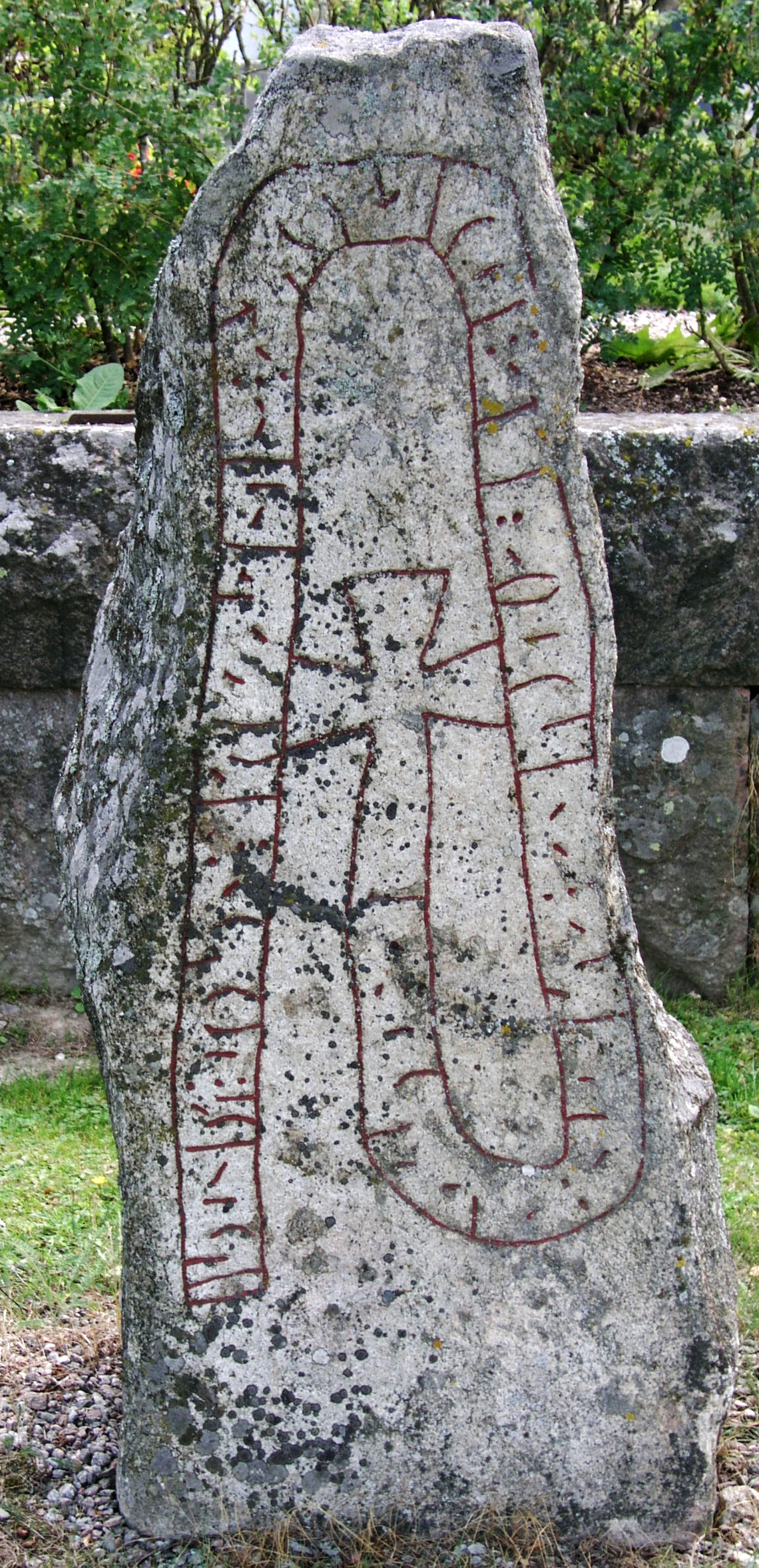Hälsinge runes on:
[Wikipedia]
[Google]
[Amazon]


 Staveless runes were the climax of the simplification process in the evolution of
Staveless runes were the climax of the simplification process in the evolution of


 Staveless runes were the climax of the simplification process in the evolution of
Staveless runes were the climax of the simplification process in the evolution of runic alphabet
Runes are the letters in a set of related alphabets known as runic alphabets native to the Germanic peoples. Runes were used to write various Germanic languages (with some exceptions) before they adopted the Latin alphabet, and for specialised ...
s that had started when the Elder Futhark
The Elder Futhark (or Fuþark), also known as the Older Futhark, Old Futhark, or Germanic Futhark, is the oldest form of the runic alphabets. It was a writing system used by Germanic peoples for Northwest Germanic dialects in the Migration Peri ...
was superseded by the Younger Futhark.Enoksen 1998:75 In order to create the staveless runes, vertical marks (or staves) were dropped from individual letters (or runes). The name "staveless" is not entirely accurate, since the i rune consists of a whole stave and the f, þ, k and the s runes consist of shortened main staves.
Since their discovery on runestones at Hälsingland in the 17th century, staveless runes have also been known as the Hälsinge runes. This label is, however, misleading since staveless runes also appear in Medelpad, Södermanland, and the Norwegian town of Bergen.
Shape
The staveless runes may appear hard to recognize at first glance, but the only difference between them and the preceding Younger Futhark is – in fact – their omission of main staves. If main staves are added, it is apparent that the '' a'', '' n'', '' t'', '' l'' and ''s'' runes are identical to their staved predecessors.Enoksen 1998:76 No '' ą'' rune has been found in inscriptions, but it has been postulated that it was a mirrored form of the '' b'' rune due to pairings indicated in the staveless runes.Enoksen 1998:77Scholarship
It appears from the title page of Johannes Bureus' runic primer that Bureus had some understanding of the staveless runes in 1611, but that this has been denied by virtually all runologists.Enoksen 1998:183 Since Bureus had not succeeded in deciphering the runes, a large poster with the image of two runestones with staveless runes was published in 1624 together with the announcement of a royal reward for the one who could decipher them.Enoksen 1998:194 It would, however, take half a century before someone found the solution. At the end of the 1660s, Athanasius Kircher, who was an interpreter of hieroglyphs, studied the runes, but he arrived at the conclusion that the staveless runes were nothing but meaningless scribbles and that the stones had been erected in order to protect against snakes. The verdict of the hieroglyph expert was too much for the mathematician, antiquarian and Hälsingland nativeMagnus Celsius
Magnus Celsius (16 January 1621 – 5 May 1679) was a Swedish astronomer and mathematician, decipherer of the staveless runes. His grandson was Anders Celsius.
He was the father of Olof Celsius
Olof Celsius (the elder) (19 July 1670 – 24 June ...
. Celsius departed for Hälsingland in the early 1670s and made meticulous drawings of the runestones. When he was back in Stockholm, he worked hard on deciphering the runes but had to give up. Eventually he tried to add staves to the runes and suddenly deciphered some of the staveless runes. By 1674, he had deciphered all the runes except for the R rune, which he interpreted as a distinguishing mark.
The following year, Celsius made a speech at Uppsala University, where he made his discovery public. He started the process of publishing his discovery shortly after making the speech but died suddenly before the printing was finished. However, the news of the discovery spread quickly among scholars and it was used as the basis of the claim that stenography
Shorthand is an abbreviated symbolic writing method that increases speed and brevity of writing as compared to longhand, a more common method of writing a language. The process of writing in shorthand is called stenography, from the Greek ''ste ...
had originated in Sweden.Enoksen 1998:195 It would be Olof Celsius who finally published his father's discovery.
Examples
The following runestones are some of those that feature staveless runes: * Österberga stone *Skarpåker stone
The Skarpåker Stone, designated by Rundata as Sö 154, is a Viking Age memorial runestone that originally was located in Skarpåker, Nyköping, Sörmland, Sweden. It dates to the early eleventh century.
Description
The runestone was discovered ...
* Sö 137 at Aspa bro
* Spånga stone
Notes
References
*Enoksen, Lars Magnar (1998). ''Runor : historia, tydning, tolkning''. Historiska Media, Falun.See also
*Bind rune
A bind rune or bindrune ( is, bandrún) is a Migration Period Germanic typographic ligature, ligature of two or more Runic alphabet, runes. They are extremely rare in Viking Age inscriptions, but are common in earlier (Proto-Norse) and later (med ...
{{list of writing systems
Younger Futhark